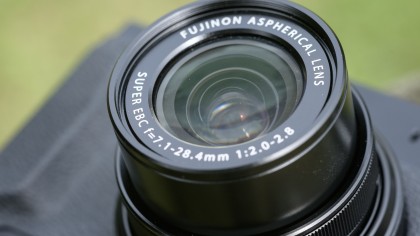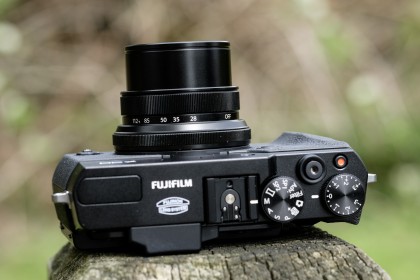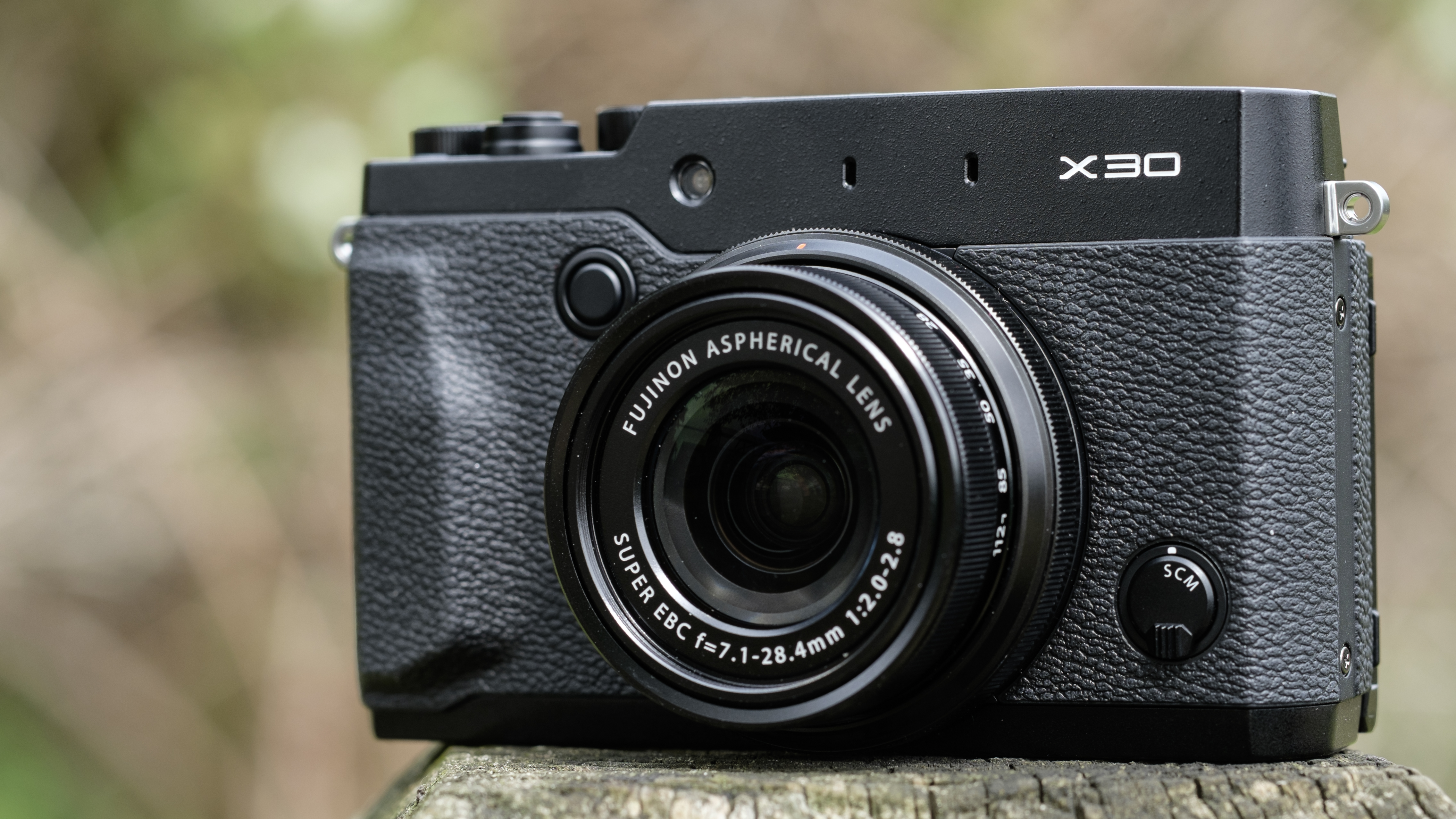TechRadar Verdict
Although it doesn't improve upon the image quality of the X20, the X30 makes a few useful upgrades to enhance handling and make it more versatile. However, there are similaly sized (and smaller) cameras with larger sensors.
Pros
- +
High quality electronic viewfinder
- +
Tilting screen
- +
Respected sensor and processing engine
Cons
- -
Screen not touch-sensitive
- -
No increase in sensor size despite larger camera body
- -
No simultaneous raw file recording with filter effects
Why you can trust TechRadar
The Fujifilm X20 is one of our favourite high-end compact cameras of recent times, so the news that it has been upgraded is pretty exciting. However, as the lens, sensor and processing engine of the new X30 are the same as the X20, the image quality is likely remain the same unless the processing has been tweaked. The main change is the swap from an optical viewfinder to an electronic one.
As it replaces the X20, the X30 takes up the same position in the Fuji range. It's one step down from the X100S (recently upgraded to the X100T), in Fuji's compact camera line-up, and a step up from Fuji's smaller Fuji X-Q1 and X-F1 models. The X30 is an advanced camera aimed at enthusiast photographers who want to take control over the settings.
Like the X20, the X30 has a 12Mp 2/3-inch (8.6x6.6mm) X-Trans CMOS II sensor. This has been greeted with some disappointment as many photographers were hoping that Fuji might squeeze a larger sensor in to challenge the Sony RX100 III and Canon G7 X, which have one-inch type (13.2mm x 8.8mm) sensors, or even the Panasonic LX100 which has a Four Thirds type (17.3x13mm) sensor.
These sensors are all trumped by the APS-C format (23.6x15.8mm) sensor in Fuji's larger X100S and X100T, but these are a very different kind of camera with deliberately retro styling and a fixed focal length lens. Some Fuji admirers were hoping that the company might introduce a small compact with a zoom lens and a larger sensor. Not just yet it would seem.

As before, the X30's sensor is coupled with Fuji's EXR Processor II engine and an f/2.0-f/2.8 lens with an effective focal length of 28-114mm. This is a good range for a walk-around, general purpose camera and the large aperture affords some control over depth of field as well as the ability to use faster shutter speeds to freeze movement in low light.
The most significant change made with the X30 is the fact that the optical viewfinder has been replaced by an electronic unit, in fact it's the same EVF as is found in the popular Fuji X-T1. This means that it has 2.36 million dots and magnification of 0.62x. Unlike the X-T1, however, the X30's screen can't show a magnified view next to the full scene to allow precise manual focusing at the same time as image composition. On the plus side, the shooting data displayed in the EVF rotates when the camera is turned for upright shooting to make it easier to read.
Fuji has also increased the size of the screen on the back of the camera, it's now a three-inch, 920,000-dot device instead of the 2.8-inch 460,000-dot unit on the X20. The X30's screen is also mounted on a tilting bracket to make it easier to compose images from above or below head height.
The screen still isn't touch-sensitive, but Wi-Fi connectivity is built-in to the X30 (the X20 doesn't have it) so it is possible to control the camera remotely by the touchscreen of a smartphone or tablet. When the camera is connected to a smart device via Fuji's free Camera Remote app it's possible to set the exposure settings and exposure compensation as well as the sensitivity, self-timer, Film Simulation mode, white balance, flash mode and macro focus mode. A tap on the phone screen can also set the focus point and trip the shutter.

Changing to an electronic viewfinder (EVF) brings the ability to see images as they will actually be captured, as adjustments to features such as white balance and exposure are shown. It also avoids the parallax error that is associated with an optical viewfinder that doesn't show exactly the same image as the lens.
As before, sensitivity may be set in the range ISO 100-3200, although this can be expanded to ISO 100-12800 for JPEGS. In a change from the X20, however, exposure compensation extends to +/-3Ev instead of +/-2Ev.
Other changes from the X20 include the introduction of a new Film Simulation mode called Classic Chrome, which is said to produce warm earthy tones, and an improved battery life. The X30 uses the same battery as the X100S and this enables around 470 shots to be taken in a single charge. That's about 1.8x more than the X20. Full HD video can also be recorded at 24, 25, 30, 50 and 60fps.
One disappointment is that Fuji has not taken the opportunity to allow raw files to be recorded when using the digital filter effects (Advanced Filters). As with the X20, however, raw files can be recorded whatever Film Simulation mode is selected, so it's possible to have the full colour information as well as a monochrome JPEG, for example.
